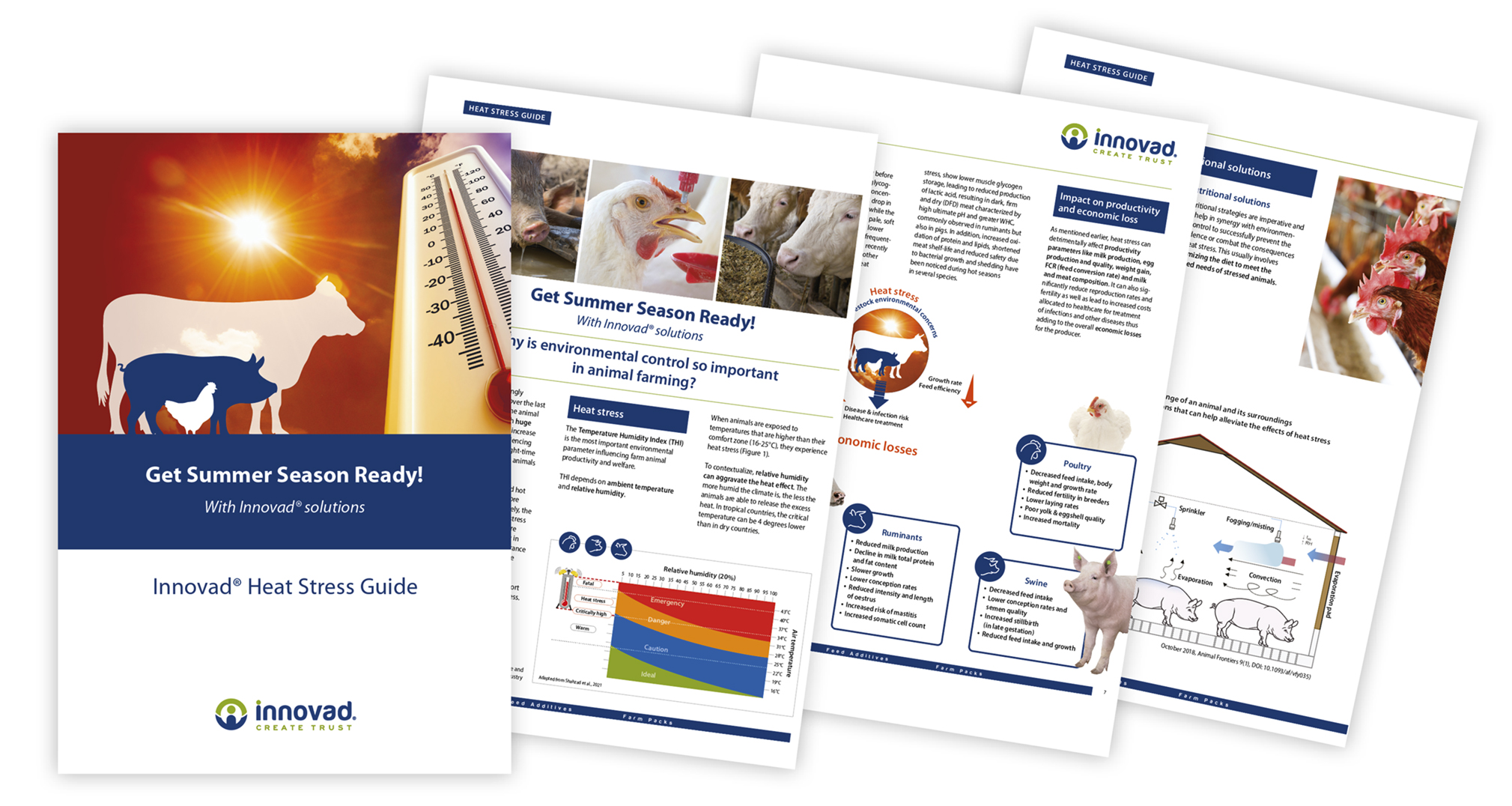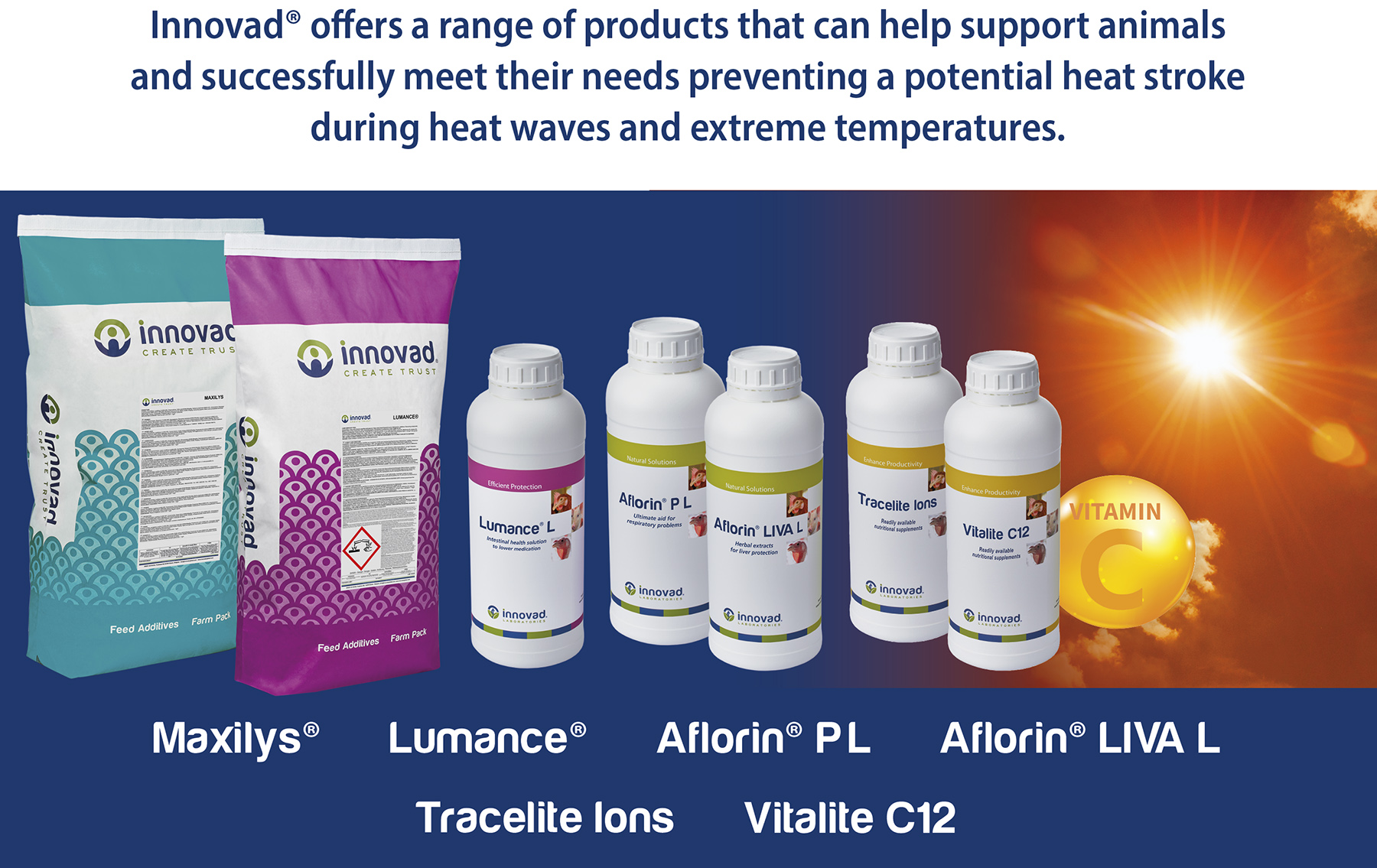Heat stress can occur in all farm animal species, whether it’s pigs, ruminants or poultry. There are numerous physiological consequences that require immediate attention to prevent economic loss, disease and even death.
Gut Integrity
When animals experience abnormally high temperatures, their body employs various thermoregulatory mechanisms to maintain an acceptable temperature and thus redirects the blood flow to the skin, where the heat can be released. Consequently, the body cools down. The redirection of blood follows that the other vital organs (kidneys, liver and gastro-intestinal tract) do not get an adequate blood supply, and this can result in overall malfunctioning. The reduced blood flow to the intestinal epithelium leads to a decrease in supply of nutrients and oxygen, and results in hypoxia. One of the consequences of such a state that can have acute and detrimental effects to animal health is the condition of leaky gut.
Heat stress also causes a change in eating behavior, especially in pigs). The animals are fed during the cooler period of the day, and they consume faster a relatively larger amount of food per meal. The daily consumption of feed however is reduced on average. This altogether leads to a rapid change in the intestinal microflora and the overgrowth of Clostridium perfringens, causing serious consequences.
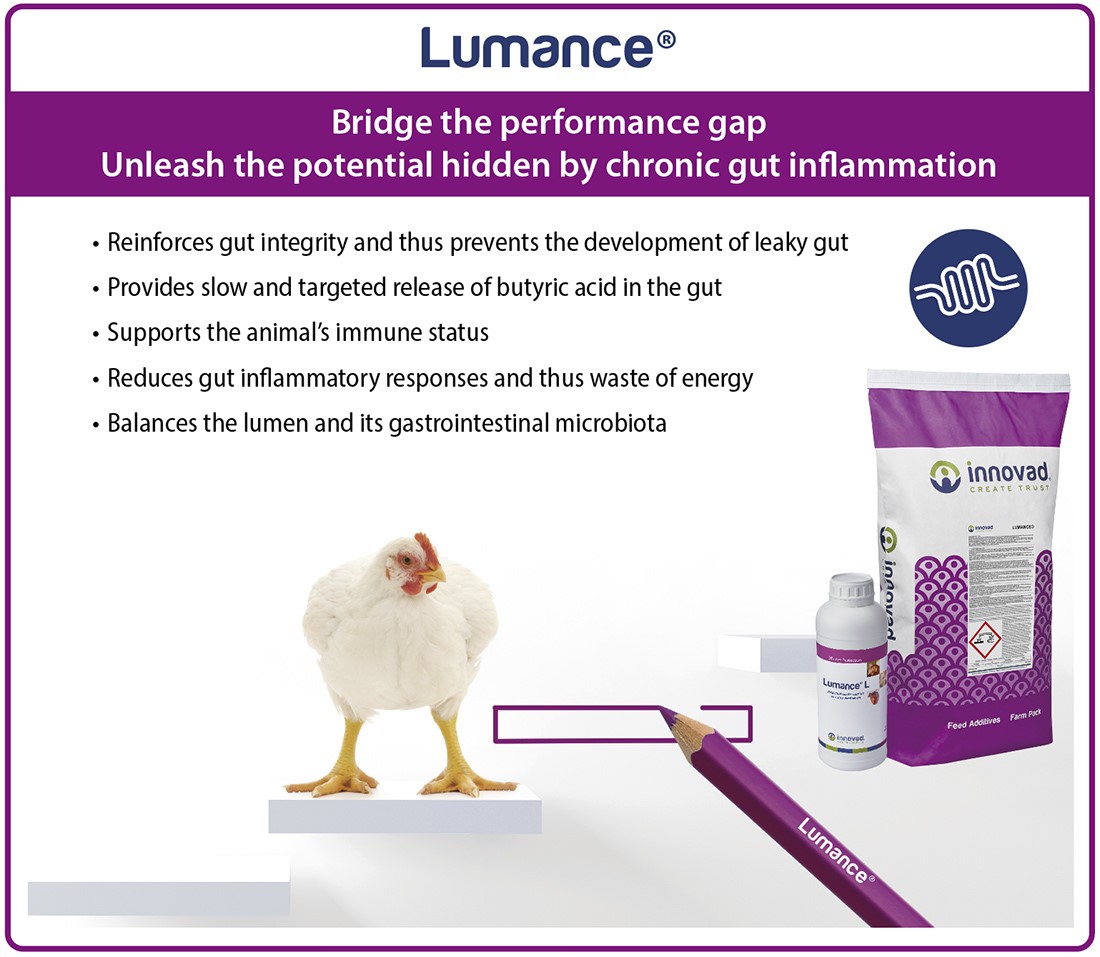
Oxidative stress
Oxidative stress (OS) is defined as the presence of reactive oxygen species (ROS) more than the available antioxidant buffering capacity. Environmental stress causes an increase in OS and an imbalance in antioxidant status. OS is regarded as a factor responsible for the deleterious effects of heat stress on animal health and welfare. Heat stress induces OS through creating a redox imbalance in favor of pro-oxidants and reducing cellular antioxidant capacity. High temperatures can adversely affect the structure and physiology of the cells, causing impairment in transcription, RNA processing, translation, oxidative metabolism, membrane structure and function.
Metabolic consequences and energy imbalance
Heat-stressed pigs and ruminants show increased basal insulin secretion and whole-body insulin sensitivity, and both variables possibly contribute to decreased adipose tissue mobilization and increased synthesis of fat. Because of the physiological and metabolic changes in response to heat stress, animals reduce body fat mobilization, depress protein deposition, and increase protein utilization to synthesize glucose, as glucose and its precursors are a major source of energy for animals suffering from heat stress. All these factors contribute to increased carcass lipid observed in livestock animals during summer.
High dietary fat inclusion during heat stress has been shown to improve pigs average daily gain and gain to feed ratio, especially when crude protein level is elevated. Ghazalah et al. (2008) showed that high fat diets (5%) helped in reducing the detrimental effect of heat stress in broilers raised at 29-36° C.
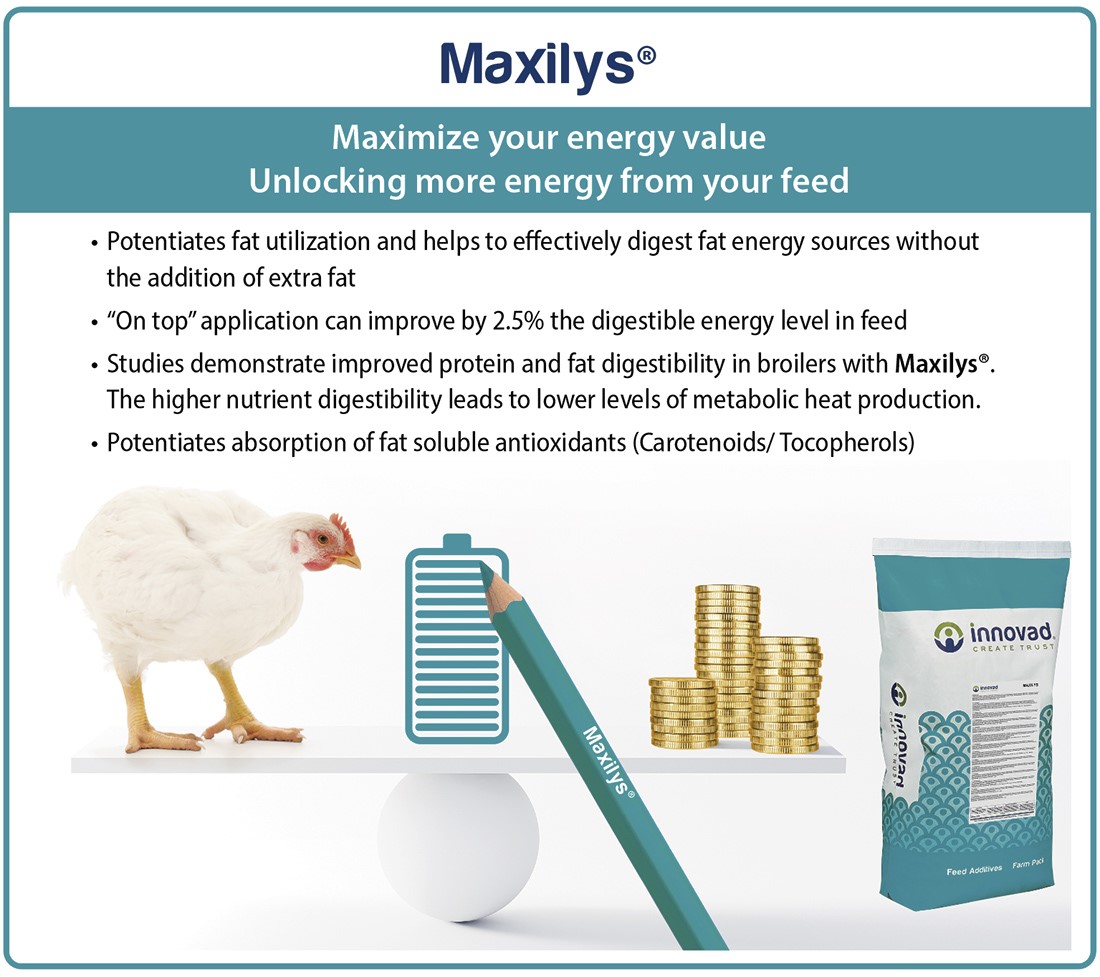
Electrolyte imbalance
During heat stress, respiration rate and water intake are increased. This leads to loss of carbon dioxide (CO2) through respiration and changes in acid-base balance. This causes an imbalance, which suppresses the feed intake and may result in diarrhoea and even death in severe cases. The minerals K+, Na+ and Cl- play essential roles due to their participation in the osmotic balance, in the acid-base balance, and in the integrity of mechanisms that regulate the transport of substances across cell membranes. Imbalances among those minerals affect many metabolic functions, and therefore, broiler performance.
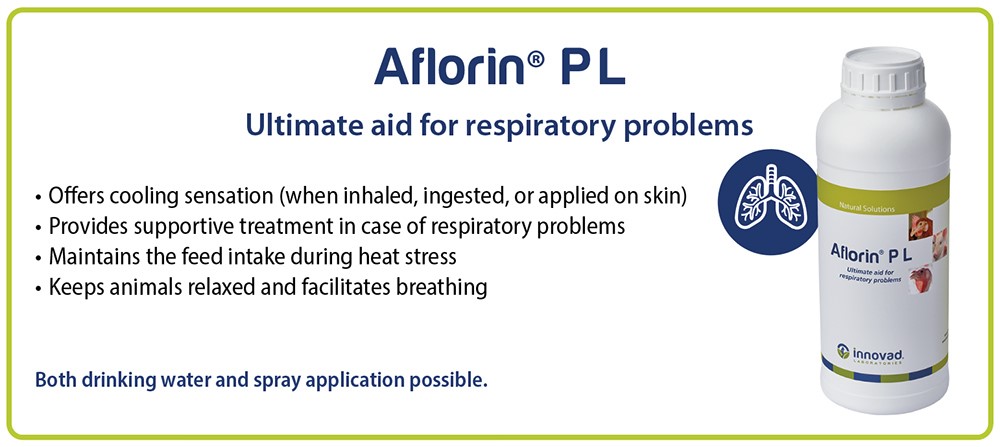
Affected productivity and economic loss
As mentioned earlier, heat stress can detrimentally affect productivity parameters like milk production, egg production and quality, weight gain, FCR (feed conversion rate) and milk and meat composition. It can also significantly reduce reproduction rates and fertility as well as lead to increased costs allocated to healthcare for treatment of infections and other diseases thus adding to the overall economic losses for the producer.
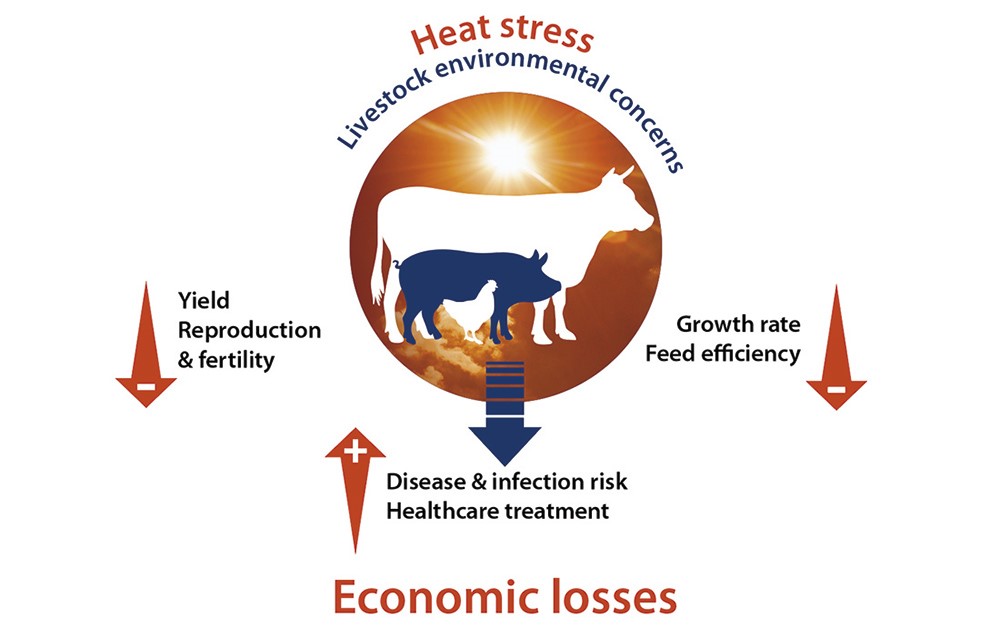
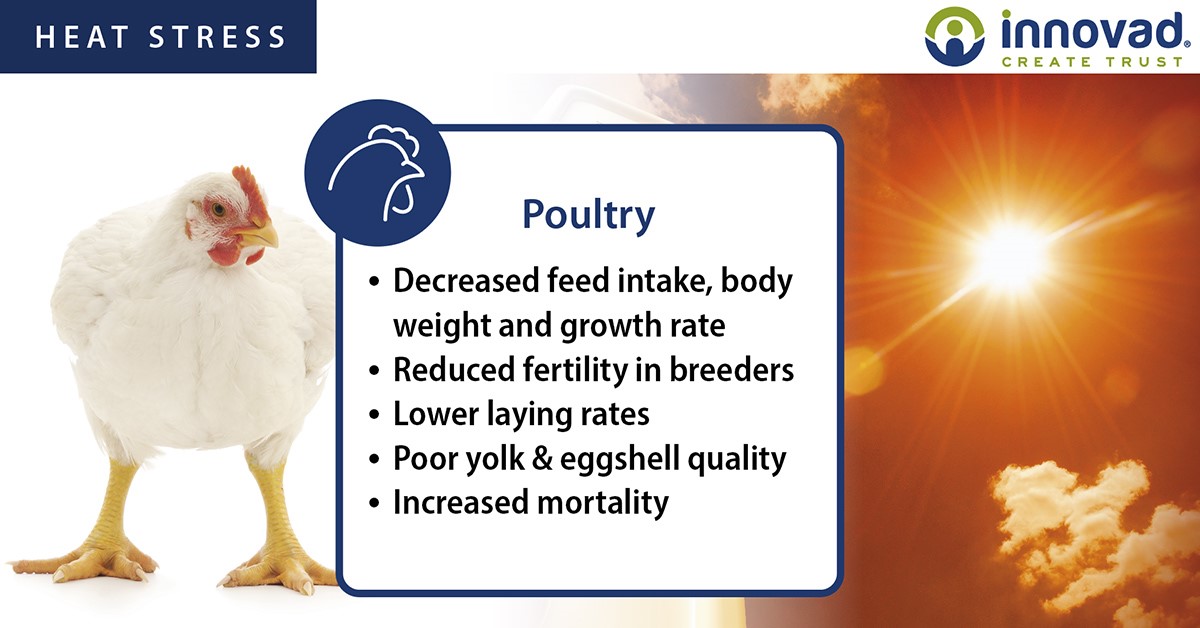
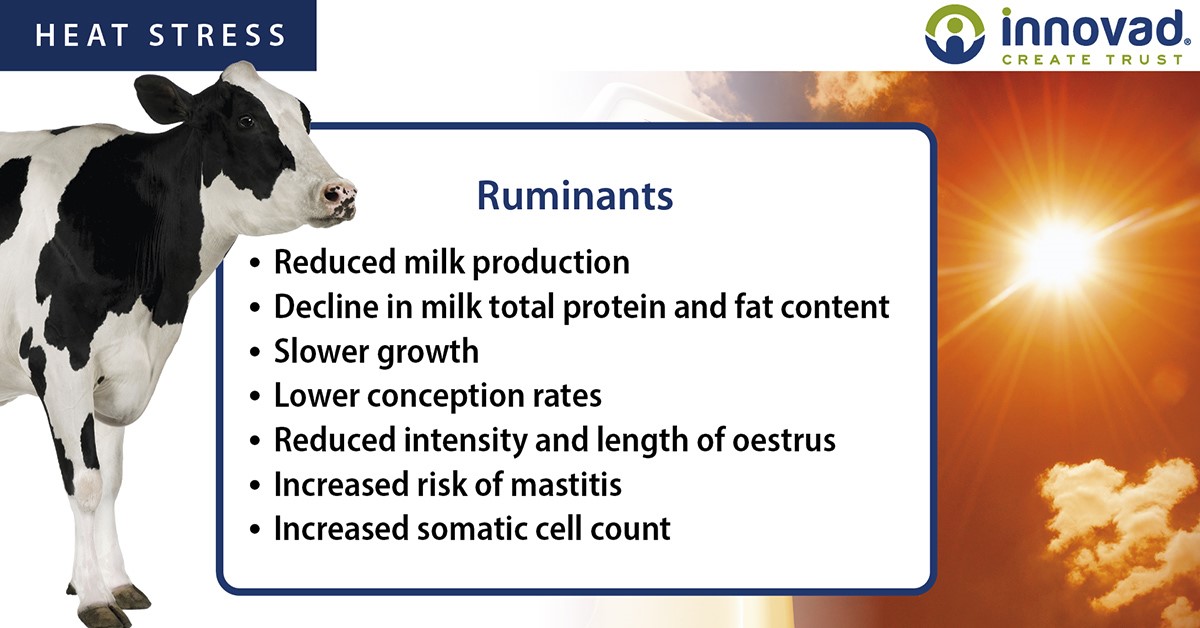
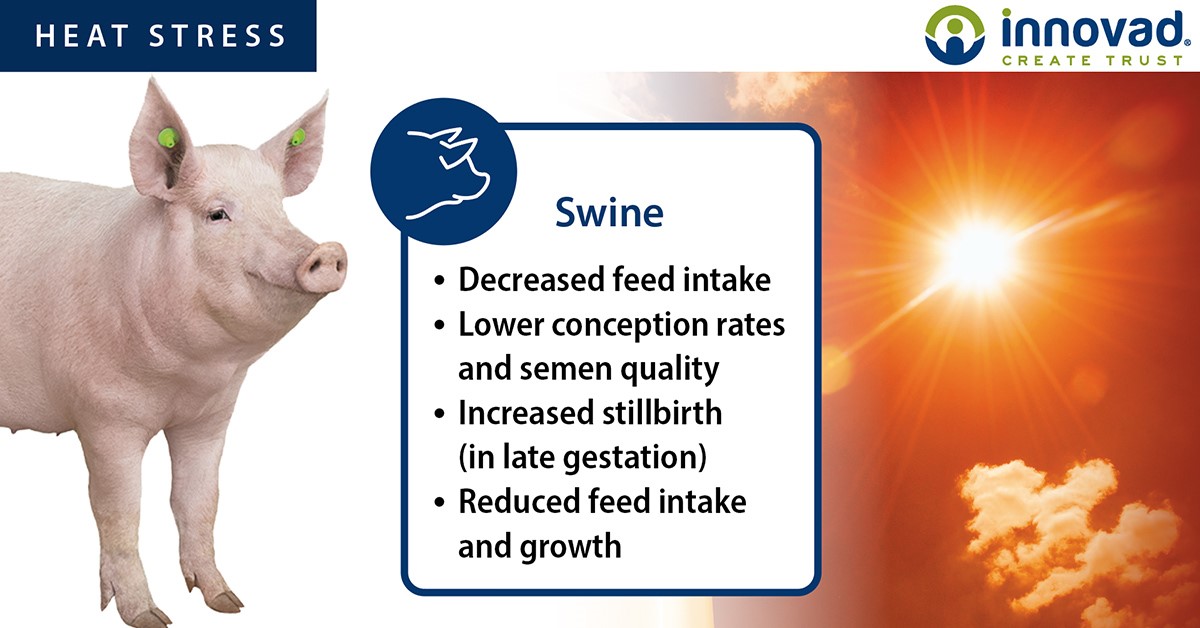
Recognize these negative consequences of heat stress?
Request Innovad's® heat stress guide with our expert Dr. Milena Sevastiyanova to discover more about the impact of heat stress on animal health, revenue and productivity.
